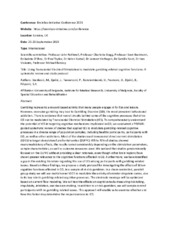| dc.description.abstract | Gambling represents a reward-based activity that many people engage in for fun and leisure. However, excessive gambling may lead to Gambling Disorder (GD), the most prevalent behavioural addiction. There is evidence that neural circuits behind some of the cognitive processes that drive GD can be modulated by Transcranial Electrical Stimulation (tES). To comprehensively understand the potential of tES in targeting cognitive mechanisms implicated in GD, we conducted a PRISMA-guided systematic review of studies that applied tES to modulate gambling-related cognitive processes in a diverse range of population samples, including healthy participants, participants with GD, as well as other addictions. Most of the studies used transcranial direct current stimulation (tDCS) to target dorsolateral prefrontal cortex (DLPFC). While 70% of studies showed neuromodulatory effects, the results varied considerably depending on the stimulation parameters, sample characteristics, as well as outcome measures used. We noticed that studies predominantly focused on the DLPFC without providing a clear rationale, even though other brain regions have shown greater relevance to the cognitive functions affected in GD. Furthermore, we have identified a gap in the existing literature regarding the use of tES among participants with gambling-related issues. Based on these findings, we propose a study protocol for investigating the effects of tES on cognitive functions affected in GD, in a sample of at-risk gamblers. In a sham-controlled, parallel-group study we will use multichannel tDCS to modulate the activity of anterior cingulate cortex, due to its key role in gambling-related cognitive processes. The electrode montage will be optimized based on current flow modeling. We will test the effects on cognitive tasks measuring risk-taking, impulsivity, inhibition, and decision-making. In addition to at risk-gamblers, we will sample control participants with no gambling-related issues. This approach will enable us to examine whether and how this factor may determine the responsiveness to tES. | sr |

